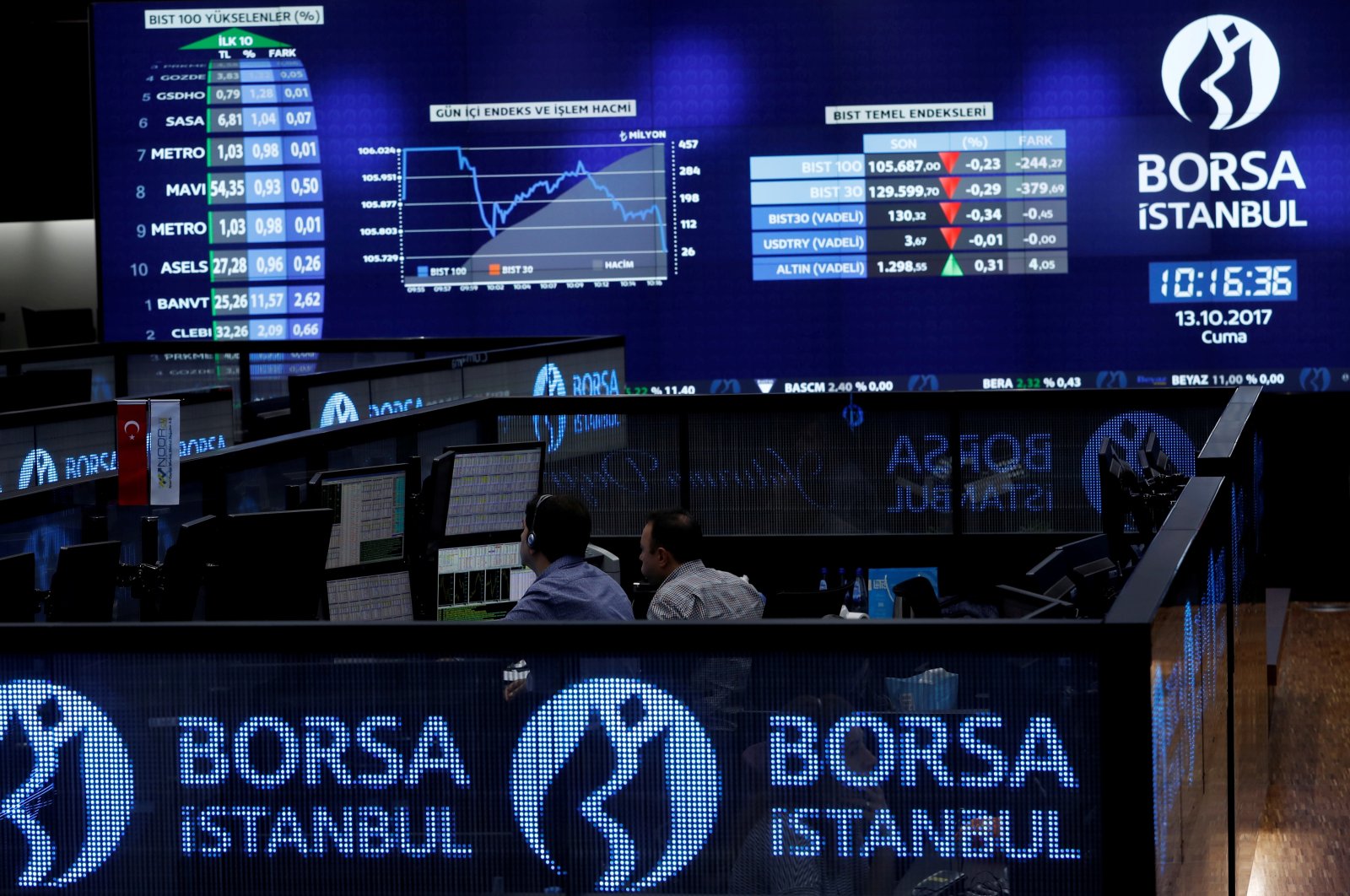Negative interest rate era ends worldwide as Japan drops policy
BERLIN/NEW YORK
The Bank of Japan (BoJ) raised its interest rates for the first time since 2007 — the last central bank to drop the negative interest rate policy, which was introduced with global recession and the debt crisis.
The BoJ started its negative interest rate policy in 2016 to prevent a stronger yen from damaging the export-oriented economy, and to fight deflation, though after significant wage increases at large companies, the bank decided to end the policy.
The bank raised its short-term interest rates from minus 0.1% to a range of 0% to 0.1%, marking the first rate hike in 17 years.
It also ended the yield curve control on the Japan 10-year government bond.
BoJ Gov. Kazuo Ueda noted a return to “normal” monetary policy, targeting short-term interest rates, following the footsteps of other central banks.
Although the reversal in interest rates positively influenced equity markets, the yen surprisingly came under pressure, with the US dollar/Japanese yen parity rising above 150.
The yen’s reaction is likely a result of the uncertain outlook, with Ueda not indicating whether further steps will be taken and to what extent, said analysts.
Negative interest rates encourage spending
Negative interest rates are defined as one of the “extraordinary” tools of monetary policy, as they are used to combat low growth and deflation, since banks pay interest on reserves held at central banks, rather than receiving interest, thereby encouraging spending.
The goal of negative interest rates is to increase loan demand by lowering the cost of borrowing.
Although negative interest rates stimulate economic activity during periods of low inflation or economic downturns, they also encourage borrowing and spending, as it becomes costly to keep money in cash or in bank accounts.
The policy is usually implemented as a temporary measure to support economic recovery, rather than a long-term strategy.
Many central banks introduced the policy in the past, such as the BoJ, the European Central Bank (ECB), Denmark’s central bank, the Swedish central bank and the Swiss National Bank (SNB).
Those against the policy argue that sub-zero interest rates distort the price mechanism in markets and negative interest rates narrow the margin that financial institutions earn from lending.
Monetary easing introduced upon global financial crisis
The world’s leading central banks, such as the Fed, ECB and the BoJ, began monetary easing by cutting interest rates to near-zero levels, in the aftermath of the global financial crisis in 2008, following the mortgage crisis in the US.
The Fed kept its policy interest rate in the 0% to 0.25% range from late 2008 until the end of 2015, while other central banks decided to cut interest rates below zero because of concerns that deflation could push their economies into recession.
As for the ECB, it introduced negative interest rates on reserves held by banks in the eurozone to encourage lending and stimulate economic activity in the region.
The bank switched to a negative monetary policy in 2014 by reducing the interest rate paid by banks for deposits held at the central bank to minus 0.1% and further decreasing deposit rates to minus 0.5% in September 2019.
The ECB ended its negative interest rate policy in July 2022.
Switzerland wanted to prevent franc from gaining too fast
The SNB adopted a negative interest rate policy between 2014 and 2022, reducing interest rates to minus 0.75% to prevent the Swiss franc from gaining too fast, which could damage the country’s export-oriented economy.
Sweden’s central bank cut rates below zero between 2015 to 2020 to combat deflationary measures and the Danish central bank followed suit between 2021 to 2022 to stabilize its currency to the euro and manage capital flows.
The BoJ joined its foreign counterparts by lowering its policy rate to minus 0.10% and it finally abandoned the negative interest rate policy this week.
The Fed and the ECB are now assessing when to start the first rate cuts, as the two banks started the upward turn in interest rates in 2022.
Negative interest rate policy criticized for leading to currency depreciation
The policy has been criticized for suppressing the profitability of banks and other financial institutions, leading to lower, or even negative, returns on savings and pension accounts, and causing currency depreciation.
Experts suggest that the policy, which pushes investors toward risky assets to generate income, can contribute to asset bubbles and financial instability, which, in turn, could lead to crises in the long run.
Seen as a signal of deflationary pressures, negative interest rate policies have been opposed because they could undermine consumer and business confidence, making consumers more cautious with spending and businesses with investments.
The ECB’s negative interest rates contributed to credit growth, though they were insufficient to raise inflation in the eurozone to the 2% target.
Global supply chain disruptions and financial shocks caused by the coronavirus pandemic and the Russo-Ukrainian war ended the low inflation period, enabling banks to abandon negative interest rates.
Negative interest rates not expected to have major effect on capital flows
There were concerns that high interest rates in Japan could lead large investors, such as insurance companies and pension funds, to withdraw their capital invested abroad, which amounted to more than $4 trillion at the end of last year, with negative consequences for market stability.
While the BoJ’s decision is a turning point, it will initially have little effect on global capital markets, as this step is very small and further rapid rate hikes are unlikely, said analysts.
Analysts argue that no major change in capital flows can be expected for the time being, and Japanese capital, much of which is tied up abroad, will need much higher interest rates to return to Japan.
Collective bargaining agreements point to more price pressure
Significant wage growth in Japan was a condition for higher interest rates, however, in the wake of wage increases reaching a 33-year high, analysts underlined the danger of rising inflationary pressure, citing the possibility that rising wages and prices could lead to a potentially dangerous inflationary spiral.
Analysts emphasized that, despite the return in interest rates, financing conditions remain remarkably loose, which, in turn, could further strengthen inflation.
Although the BoJ wants to stimulate domestic demand, the bank currently risks it, since 80% of Japanese homeowners finance their properties with loans based on market interest rates, and therefore, a sharp rise in rates is likely to push up household repayments significantly, hence reducing consumption.
The BoJ will not make new interest rate decisions until July, say experts and investors.
Analysts state that even if a good outcome from wage negotiations could prove useful, a sharp increase in consumption should not be expected, and that it is unlikely that the bank will make a series of rapid rate hikes.
Japan’s public debt alone amounts to 250% of its gross domestic product (GDP), while debt, including households and companies, is 426% of GDP.
Conversely, this ratio is at 295% in China and 264% in the US.
A 50-basis point rate hike could cost the Japanese private sector an additional 11 trillion yen ($72.5 billion) in interest costs, or almost 2% of its GDP, according to calculations.
The BoJ tried to raise the key interest rate twice since 1999, between 2000 and 2007, but then lowered it to 0%.
The bank’s Monetary Policy Board raised interest rates too early and had to quickly correct them in 2000, with Ueda being the only member of the board to vote against it.
After the 2008 global financial crisis, the BoJ tried to create inflation by buying large amounts of bonds, but it failed to succeed for a long time.
*Writing by Emir Yildirim in Istanbul
Anadolu Agency website contains only a portion of the news stories offered to subscribers in the AA News Broadcasting System (HAS), and in summarized form. Please contact us for subscription options.


